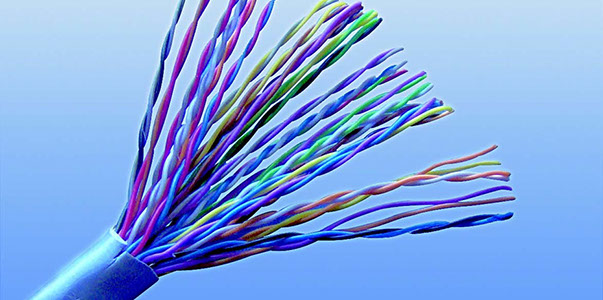
Copper data cabling standards.
As the need for increased bandwidth grows and applications continually get more complex, so does copper twisted-pair cable. Below are brief explanations of specifications for twisted-pair cabling and the applications for which each is best suited.
Copper data cabling
standards
The UK's leading cable supplier.
T : 0203 637 0390
E : sales@cableshed.com
0203 637 0390
Our dedicated sales team are here to help
sales@ukcablesupplier.co.uk
Need some information? We respond quickly.
trade account
Business customer? click here.
Copper cable standards
As the need for increased bandwidth grows and applications continually get more complex, so does copper twisted-pair cable. Below are brief explanations of specifications for twisted-pair cabling and the applications for which each is best suited.
TIA/EIA-568B specifies several “categories” for both the components and the cable. The ISO/IEC specifies “categories” for the components and “classes” for the cabling.
Cable categories.
Category 3 (CAT3) cable is rated for networks operating up to 16 Mbps. It is suitable for voice transmissions (not VoIP). ISO/IEC refers to the end-to-end channel as Class C.
Category 4 cable is rated for transmission of 16 Mbps up to 100 meters. It is considered obsolete.
Category 5 (CAT5) cable was common for 100-Mbps LANs. It was ratified in 1991 and is now considered obsolete.
Enhanced Category 5 (CAT5e/Class D) cable, ratified in 1999, was designed to enable twisted-pair cabling to support full-duplex, 100-MHz applications such as 100BASE-TX and 1000BASE-T. CAT5e introduces stricter performance parameters such as Power-Sum Near-End Crosstalk (PS-NEXT), Equal-Level Far-End Crosstalk (EL-FEXT), and Power-Sum Equal-Level Far-End Crosstalk (PS-ELFEXT). It also introduces channel and component testing.
Category 6 (CAT6/Class E) cable easily handles Gigabit Ethernet (1000BASE-T) applications. It’s a 100-ohm cable with a frequency of 250 MHz. CAT6 has far more stringent performance parameters than CAT5e, and is characterized by channel, link, and component testing. In addition, CAT6 components must be backwards-
compatible with lower-level components. It’s important to note with CAT6, as with all categories, that all the components in a channel must be of the same level. If not, the channel will perform at the lowest level.
The TIA TSB-155: Characterizing Existing Category 6 Cabling
to Support 10-Gb Ethernet, ISO/IEC 24750, and IEEE 802.3an all address 10GBASE-T over UTP cabling. They also address installation practices to mitigate Alien Crosstalk (ANEXT) though it is not a specified CAT6 measurement. CAT6 is also recommended for mid- span PoE applications. At the time of this publication (mid 2007), CAT6 cabling is the system of choice for new installations because of the increased headroom.
Augmented Category 6 (CAT6a/Class EA), a relatively new standard, is designed to meet or exceed the requirements of 10-Gigabit Ethernet over copper at 100 meters. It extends the frequency range of CAT6 from 250 MHz to 500 MHz. Like CAT6,
it includes an integrated set of channel, permanent link, and component requirements. It introduces an Alien Crosstalk
(ANEXT) measurement for closely bundled “six around one” cable configurations. Both UTP and F/UTP cables can be used in CAT6a deployments. The F/UTP cable, though, virtually eliminates the problem of ANEXT.

© 2013 - 2017 The Cable Shed™ Ltd
